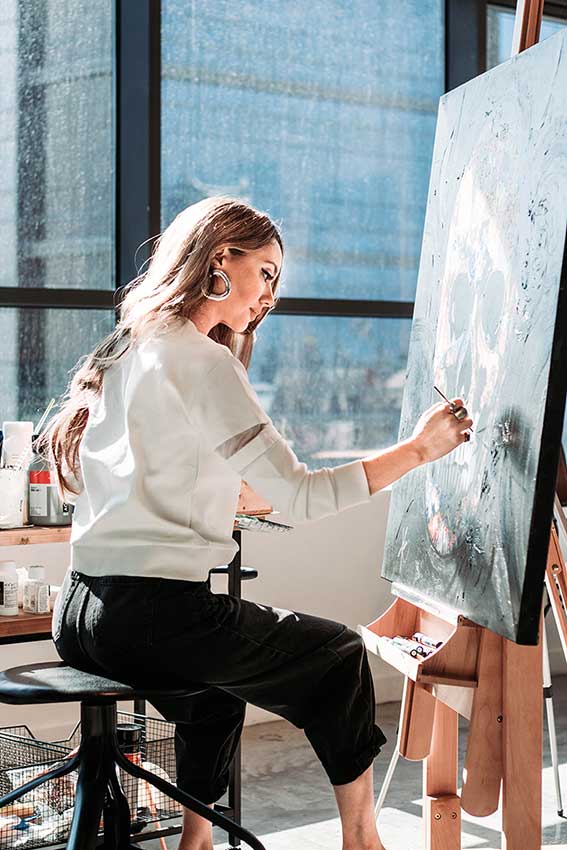A blank canvas is the beginning of a journey, where the first stroke of the paintbrush leads to artistic creation and self-expression. The canvas invites us to endless possibilities and is the foundation of every artwork that one might create. Therefore, to start off your artistic journey on the right footing, it is important to select a canvas that is better suited for your artistic vision and to preserve your artwork.
So, for those looking to invest in canvases, here are some things to consider before you make the big purchase:
1- Set the tone
When starting out on a canvas, it is important to apply a layer of toning or priming pigment all over. This can help in ensuring that any paint that you put down, be it acrylic or oil, it settles in smoothly and provides a better texture to work with. You can customize the texture of your canvas to suit the type of work you are doing, where a smooth surface is best suited to smaller detailed work while a rougher surface is adequate for broad brush strokes and larger sized paintings. In most art stores, the canvases are already primed which can save a lot of time and effort in prepping for a painting session and to preserve what is produced.
2- Linen vs. Cotton
Canvases mainly come in two fabrics: linen and cotton. They both have their own unique advantages and functions. A linen canvas is much more expensive than its cotton counterpart, as it offers more durability which can help in preserving your painting for a considerable time, while also providing a “natural” weaved finished look.
When it comes to cotton canvases, they are affordable and offer a wide range that vary in texture, tone and fibers. Additionally, cotton canvases are flexible, since it is easier and simpler to stretch or resize them without any damage. Personally, I use premium cotton canvases for my work, as they can preserve the colors and vibrance of my paintings remarkably.
3- The Price is Right
When budgeting for a painting, one should be prepared to set aside a portion of the amount for the canvas. To produce a high-quality work of art, it certainly helps to invest in premium materials and procuring a canvas of value can make the financial investment worthwhile. I always recommend starting off by dabbling in canvases of various qualities and sizes to understand what works for you and the cost of this experimentation pays off in the long run. Additionally, if you are planning to create several paintings that vary in sizes, it is much more affordable and practical to purchase a roll of canvas which often sold in bulk. These canvas rolls will need to be primed before you paint on them, however it will be worth the cost savings.
There you have it, budding artists! These are some factors worth considering if you are looking to buying a canvas and trying to understand what would be suitable for your taste. Painting is all about discovery and experimentation, so do not be scared to make mistakes because it is only then we get to learn and grow as artists.
Shop my artwork collection here.
Check my digital artwork collection here.



2 thoughts on “Why the canvas makes or breaks a painting?”
This was very informative and well written! Thanks for the tips.
Thank you Sara – I am glad you liked it
Comments are closed.